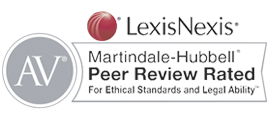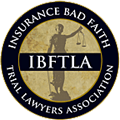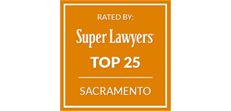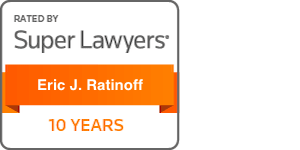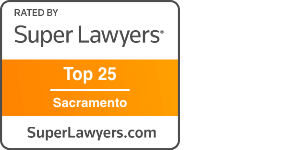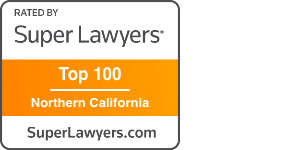Product Liability Claims: How to Prove Negligence
In product liability cases, all parties in the supply chain owe a duty of care to the consumers. This duty compels manufacturers, distributors, and retailers to ensure their products do not pose foreseeable risks when used as intended. This includes obligations like conducting thorough product testing, maintaining rigorous quality control processes during manufacturing, and providing clear instructions and warnings to consumers.
A breach of duty may occur when any one of those parties fails to meet these obligations — whether through oversight, inadequate safety testing, or insufficient warnings. Proving this breach, as well as proving that this breach caused or contributed to the injuries, forms the crux of proving negligence. A qualified lawyer can help you investigate your product liability case, obtain evidence, and guide you through the legal process so you may recover compensation for injuries.
Contents
How to Prove Negligence in a Product Liability Claim
To prove a party was negligent in a product liability case, you must prove the following elements:
Duty of Care
In California, manufacturers, distributors, and retailers are all legally obligated to ensure products are safe for consumers. This duty of care requires products to be designed and manufactured in such a way that reduces the risk of foreseeable harm. Companies must engage in rigorous product testing and maintain strict quality control during manufacturing. Additionally, they must provide clear usage instructions and adequate warnings to prevent harm to consumers.
Breach of Legal Duty
A breach occurs when a party involved with a product does not uphold the required standard of care, whether intentionally or unintentionally. Examples of such breaches include overlooking important details, not conducting enough safety tests or approving inadequate safety tests, or simply not informing consumers about potential risks. To establish that a breach of duty has taken place, it is necessary to understand the industry standards and the measures that should have been taken to prevent the breach.
Causation
In cases of product liability, the plaintiff must prove that there is a connection between the breach and sustained injuries. This involves demonstrating that the injuries would not have occurred if the responsible party had not been negligent. Establishing causation is often complex, requiring a detailed collection and organization of evidence to build a compelling case.
Damages
To pursue a negligent product liability lawsuit, the plaintiff must show concrete evidence of having suffered actual damages. This may include medical records outlining physical injuries, photographs of damaged property, or financial documents evidencing monetary losses. These damages must be directly tied to the defendant’s breach of duty. The goal is to quantify the plaintiff’s losses and determine appropriate compensation for the harm endured.
The Difference Between Negligent Product Liability and Strict Liability in California
Negligent liability centers on the defendant’s behavior, examining whether their actions or failure to act caused harm to a consumer. In such cases, the plaintiff must demonstrate how the defendant failed to uphold his or her duty and directly connect this failure to the injury sustained.
Strict product liability prioritizes the condition of the product over the specific actions or inactions of the manufacturer. In situations where a product is shown to be defective, the manufacturer may be held liable for any resulting harm, independent of any negligence on their part. This means the focus is strictly on the safety of the product itself, not the manufacturer’s conduct.
Types of Damages You May Recover in a Product Liability Case
When pursuing a product liability case, understanding the damages you may recover is essential. These damages are not only a measure of the financial restitution that may be owed to you but also a way to acknowledge the physical and emotional impact of the defective product on your life. The following is a breakdown of the economic and non-economic damages that plaintiffs may be entitled to in product liability lawsuits:
In a successful product liability case, a victim may be entitled to recover a range of damages that cover how he or she was injured financially (economic damages, such as missed wages, medical bills, etc.), as well as physically and emotionally (non-economic damages, which includes “pain and suffering”). Here’s a breakdown of what these might cover:
- Medical Expenses: Present and future medical care related to the injury, including hospital bills, rehabilitation, medication, and any specialized medical equipment.
- Lost Wages: Income not earned due to inability to work during recovery, including past and potential future earnings if the injury affects long-term work capacity.
- Loss of Earning Capacity: If injuries result in a permanent disability that impairs the victim’s ability to earn a living, compensation may be awarded for this loss.
- Property Damage: Repair or replace property damaged by the defective product.
- Other Out-of-Pocket Expenses: Any other quantifiable costs incurred due to the injury, such as transportation to medical appointments or modifications made to a home to accommodate a disability.
- Pain and Suffering: The physical impact and distress resulting from the injury.
- Emotional Distress: Covers psychological impacts such as anxiety, depression, and trauma.
- Loss of Consortium: Damages awarded to the spouse or family of the injured party for loss of companionship and support.
- Disfigurement and Scarring: Compensation for permanent physical changes that affect the victim’s appearance and possibly their self-esteem.
- Loss of Enjoyment of Life: Incapacity to participate in hobbies or activities the victim previously enjoyed.
If conduct is found to be outstandingly bad or malicious in nature, punitive damages may be awarded by the court to deter future misconduct.
Speak With the Product Liability Lawyers at Eric Ratinoff Law Corp.
At Eric Ratinoff Law Corp., our product liability attorneys understand the complexities of proving negligence in product liability cases. From identifying breaches in duty to establishing causation, we use our unique approach to storytelling to clearly demonstrate how negligence impacted your life. Our team collaborates with expert witnesses and gathers extensive evidence, helping to build a solid case that represents the full extent of your damages, both economic and non-economic.
With over 30 years of experience, we know how to take the burden of legal procedures, insurance negotiations, and paperwork off your shoulders, allowing you to focus on your recovery.


